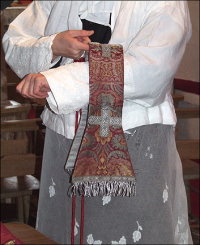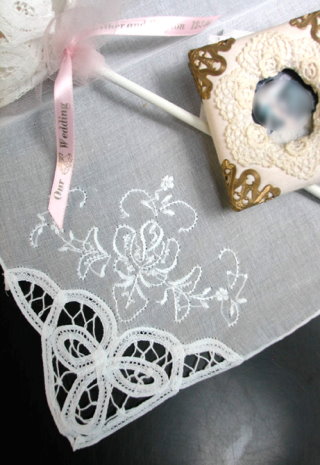Handkerchief
Explain how Europe benefited from cultural diffusion during the period c. A.D. 1000 - 1500.

Plain Cotton Handkerchief
The handkerchief was once handcoverchief
. The word kerchief (c. 1223) is from the Anglo-French word courchief, from couvrir
to cover
+ chief head
. The word handkerchief (c. 1530) is from hand +
kerchief, literally meaning a covering for the head that is in the hand.
Thus it is
a one - word contradiction in terms.
Fashion historians often point out that the handkerchief was an invention of the Renaissance. However, handkerchiefs were known in Europe already in the 1250's. The handkerchief would not have been desirable to Europeans without the influx of cotton and silk textiles during the Late Middle Ages.
In classical Greece, pieces of fine perfumed cotton, known as mouth or perspiration cloths, were often used by the wealthy. During the Roman Empire, a square piece of cotton or silk was carried, especially by women. From the 1st century B.C., Roman men of rank used an oblong cloth of linen (sudarium) chiefly to wipe perspiration from the face and hands. This cloth was dropped by the praetors as a starting signal in the Roman games and was waved by spectators as a sign of approval.

Maniple of a priest.
The handkerchief made its appearance among the English as a sweat cloth
worn at the belt.
It was a sort of towel with which to wipe the face or hands. International cricketers follow this practice now.
This handy piece started as coverchief
or veil worn by medieval women to cover the head.
This original word was corrupted into kerchief
. Kerchief then lost its meaning and came to be known merely as a cloth.
In the Late Middle Ages, the handkerchief was a prized possession to be conspicuously displayed by the wealthy. It was worn by knights in tournament as the symbol of a lady\'s favor. If the kerchief carried the lady's initials or name, it was purposely exhibited before the rival lover. The handkerchief carried in the left hand of the priest in the early Christian Church evolved into a folded band that by the 12th century had become the maniple, worn on the left arm.

The handkerchief came into general use in the Renaissance and was called a napkyn. Silk, cambric, and lawn, lavishly embroidered or laced, became fashionable for both men and women. Shapes were also varied. Today, in British English, napkin is used to refer to a diaper.
As late as the 1700s, in certain parts of Europe, people of low birth were not allowed to blow their nose on handkerchiefs.
In France, it was considered the height of vulgarity even to mention the word handkerchief.
It meant becoming a social outcast.
Romance has been a close kin of the handkerchief. Amorous ladies, eager or desirous to be wooed and pursued, dropped their delicate piece of linen on to the ground, sending a signal to the lover to pick it up, return it to make contact. Today, of course, all romantic qualities concerning the handkerchief have been lost. Now it is much more socially acceptable to blow one's nose on disposable paper handkerchiefs, the ubiquitious kleenex. However, the one area of love that the handkerchief still reigns supreme is the marriage ceremony. Expensive Venetian lace handkerchiefs are the pride of many elaborate weddings.
